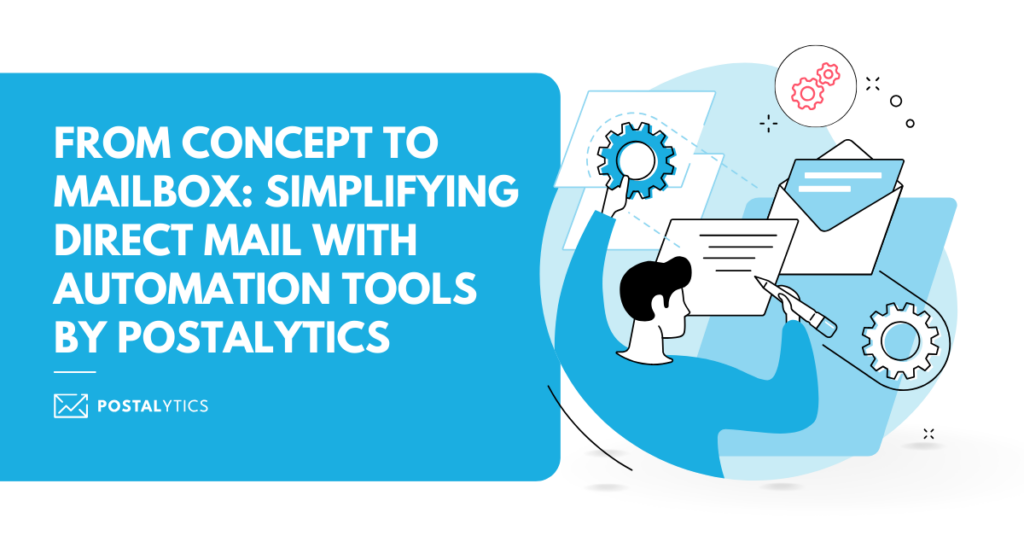
Do you avoid direct mail marketing because it takes too much time and effort? Or do you feel the ROI is not worth it?
One reason could be that you’re not using direct mail automation. Automation tools like Postalytics can speed up your campaign production and drive more conversions.
If you’re unsure how to use them or which tools best suit your business, read on to get your questions answered.
What is Direct Mail Automation?
Direct mail automation streamlines the creation and sending of personalized physical mail. It does this by integrating with marketing platforms and customer databases.
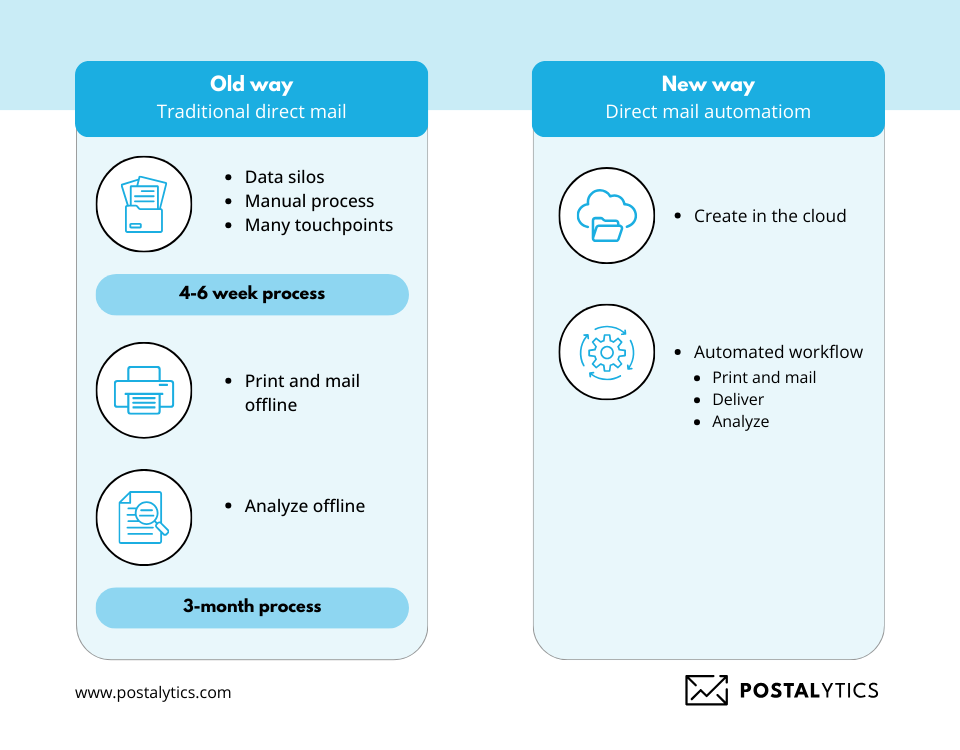
For example, say you’re a retail company. You can use direct mail automation software to send personalized discount postcards to customers based on their purchase history. The software can automatically generate customized postcards with each customer’s name, past purchases, and a unique discount code. These postcards are then scheduled to be sent out at the optimal time to coincide with a seasonal sale. The system tracks the delivery and redemption of the discount codes, providing valuable data on the campaign’s effectiveness.
This automation saves time and reduces manual effort. It also enhances the personalization and impact of direct mail marketing campaigns.
Read more: A guide on direct mail automation.
Overview of Postalytics
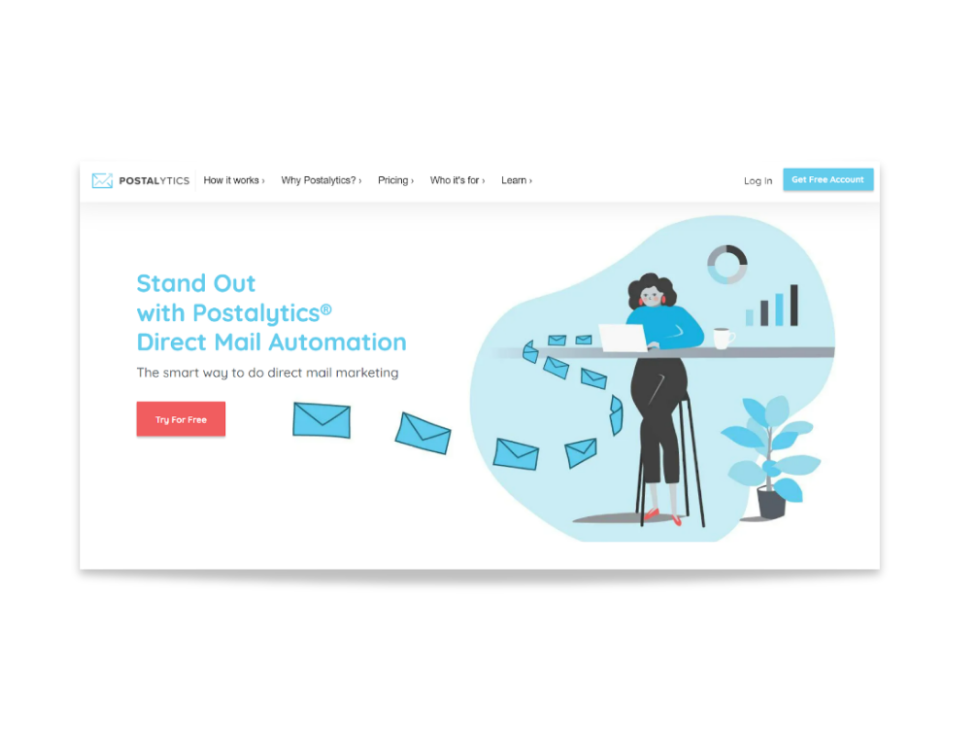
Postalytics is a direct mail automation platform. It allows marketers to create, personalize, and send automated direct mail campaigns.
Integrating with CRM systems and marketing tools streamlines the entire process. This integration enables campaigns to be executed within days instead of weeks. Marketers can design mailers using templates, personalize content with customer data, and automate the sending schedule.
For example, Buffer Insurance used Postalytics to target prospects and existing customers. The company created a personalized direct mail campaign with tailored policy offers and reminders. By using Postalytics, they reduced the campaign execution time and generated referrals.

Direct Mail Automation Tools in Postalytics
Postalytics offers different automation features that streamline your workflows from end to end. Here are the top 6 features you can utilize.
1. Design Tools
Postalytics offers robust design tools to help marketers create visually appealing, brand-aligned mail pieces. Our platform provides three essential design tools:
- Drag-and-drop editor: Arrange and customize text, images, and other elements without needing any graphic design skills. It simplifies the design process, enabling quick adjustments and real-time previews.
- Templates: Pre-designed templates tailored for different industries and campaign types. Marketers can choose a template that suits their needs and modify it to fit their specific message and branding.
- Custom design options: Users can upload their designs for complete creative control and adherence to brand guidelines.
By leveraging these features, they can speed up the campaign creation process.
2. Data Integration and Management Tools
Clean mailing lists are essential to ensure marketing materials reach the right audience. They have a direct impact on conversion rates. Poorly managed lists can lead to wasted resources and reduced campaign effectiveness. Here are three automation tools that help.
- CRM and marketing platform integration: Postalytics integrates with popular CRM systems and marketing platforms. This integration allows marketers to pull in customer data automatically, ensuring that mailing lists are up-to-date and accurately targeted.
- Mailing list management: The platform provides robust tools for managing mailing lists. These include segmentation and filtering options, helping marketers tailor their campaigns to specific audience segments.
- Data cleansing: Postalytics offers data cleansing features that validate and correct addresses, removing duplicates and outdated information. This ensures that mail reaches the intended recipients, reducing bounce rates.
These tools help marketers integrate with existing systems, manage mailing lists, and ensure data accuracy. In turn, it enhances the precision and impact of direct mail campaigns.
3. Personalization Tools
Personalization in direct marketing is vital for conversions. It involves tailoring messages and content to recipients based on their specific data and preferences. Research shows that 84% of consumers feel personalization encourages them to open direct mail.
Postalytics provides advanced personalization tools:
- Variable data printing (VDP): This feature allows each mail piece to be uniquely customized with individual recipient details. These could be names, addresses, and personalized messages.
- Dynamic content insertion: Marketers can insert variable elements like images, offers, and messages into the mail pieces based on recipient data.
- Personalized URLs (pURLs): Postalytics can generate unique URLs for each recipient, directing them to personalized landing pages. This not only enhances engagement but also provides valuable tracking and analytics.
4. Automated Workflow Tools
Marketers spend substantial time managing repetitive tasks that can be easily automated, such as setting up campaigns triggered by specific user actions. Automation not only saves time but also enhances campaign efficiency and effectiveness. Here are some features Postalytics provides:
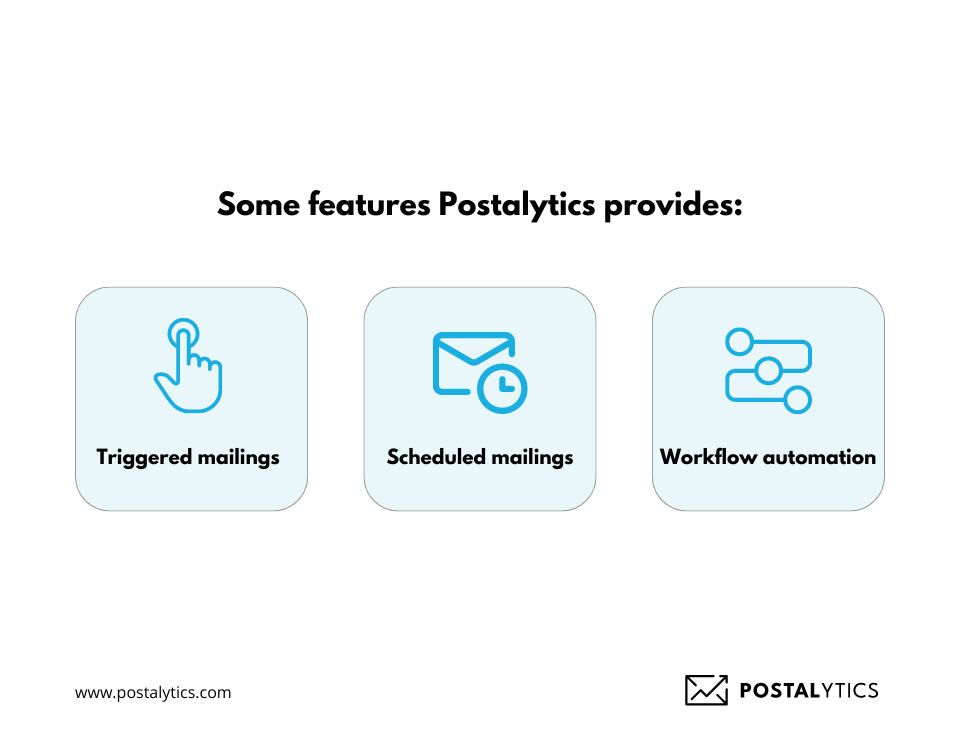
- Triggered mailings: Postalytics allows marketers to automate direct mail sends based on specific user actions or events. For instance, a welcome postcard can be automatically triggered to new customers. Or, you can trigger a reminder for email non-responders.
- Scheduled mailings: Marketers can schedule mailings to send at optimal times. This feature helps in planning and executing campaigns without manual intervention.
- Workflow automation: Postalytics integrates with CRM and marketing platforms to create automated workflows. This means that direct mail campaigns can integrate into larger marketing automation strategies.
5. Production and Fulfillment Tools
Postalytics’ production and fulfillment tools streamline the printing and deployment process of direct mail campaigns. Marketers used to spend considerable time managing these tasks manually. Here are three automation tools by Postalytics.
- Print on demand: Postalytics offers print-on-demand services, allowing marketers to produce mail pieces as needed rather than in bulk. This reduces waste, minimizes storage costs, and provides greater flexibility in campaign management.
- Partnerships with mailing services: Postalytics collaborates with established mailing services. These partnerships streamline the logistics, saving marketers from the complexities of handling postage and distribution themselves.
- Quality assurance: Postalytics implements rigorous quality assurance processes. Quality control ensures that mail pieces meet high standards before being sent out.
6. Tracking and Analytics Tools
Postalytics provides robust tracking and analytics tools that simplify monitoring direct mail campaigns. Manually tracking campaign performance often leads to errors and inefficiencies. These errors can make it difficult to gauge success with accuracy.
With Postalytics, marketers can keep track of their campaigns through a comprehensive dashboard. This dashboard provides real-time insights into the status of mail pieces, including delivery confirmations and response metrics. By centralizing all this information, Postalytics reduces the likelihood of errors. It gives marketers a clear view of their campaign’s performance.
Additionally, Postalytics enables tracking of personalized URL (pURL) activity. Each mail piece can include a unique pURL, which recipients can visit. The platform tracks these visits, providing detailed engagement and response rate data.
Integration With Automation Tools in Postalytics
Postalytics offers integrations with several key tools in your tech stack. This lets you easily manage data and create seamless workflows.
Here are five key integrations.
1. CRM Integrations
Postalytics integrates with popular Customer Relationship Management (CRM) systems like HubSpot, Salesforce, and Zoho CRM.
One key feature of Postalytics’ CRM integration is its real-time synchronization of contact data. Any changes or updates made within the CRM are automatically reflected in Postalytics, ensuring consistency across platforms.
Postalytics allows marketers to segment their mailing lists based on CRM data, like demographics, purchase history, or engagement level – this enables highly targeted and personalized campaigns.
2. Marketing Automation Integrations
Postalytics provides robust integration with major marketing automation platforms like ActiveCampaign, Marketo, and Mailchimp. These integrations allow marketers to easily incorporate direct mail campaigns into their automated marketing workflows.
By syncing customer data and automating triggers based on user actions, Postalytics ensures a smooth, direct campaign flow. Marketers can create personalized, data-driven direct mail campaigns that complement their marketing strategy.
3. Ecommerce Integrations
Ecommerce integrations allow marketers to synchronize customer data, such as purchase history and browsing behavior, from e-commerce platforms like Shopify, WooCommerce, and Magento directly into Postalytics.
This data allows marketers to tailor campaigns to individual customer preferences and behaviors. Additionally, Postalytics can automate triggers for mail sends based on ecommerce events like abandoned carts or milestone anniversaries. These triggers enable timely and relevant communication with customers.
4. Data Integration Tools
Tools like Zapier and Integromat allow marketers to integrate data from CRM systems, e-commerce platforms and marketing automation software into the Postalytics platform.
One key feature is the ability to synchronize customer data in real time, which ensures that mailing lists are always up-to-date and accurate. With these integrations, you can create automated workflows based on specific customer actions.
5. Custom Integrations
Postalytics provides custom integration tools through API access. These tools facilitate seamless integration of its functionality into existing systems.
This flexibility means marketers can tailor direct mail campaigns to their specific workflows and needs. Custom integration enables marketers to optimize their direct mail campaigns for better results and ROI.
Case Study: How Automated Direct Mail Helps Goodman Manufacturing Save Time and Money?
The team at Goodman Manufacturing wanted to send direct mail to the U.S. and Canada without doing double the work. They realized that manual workflows caused problems, and they needed easy tools.
That’s when they adopted Postalytics. They used the platform to design mail pieces, implement personalized QR codes and track everything through the dashboard.
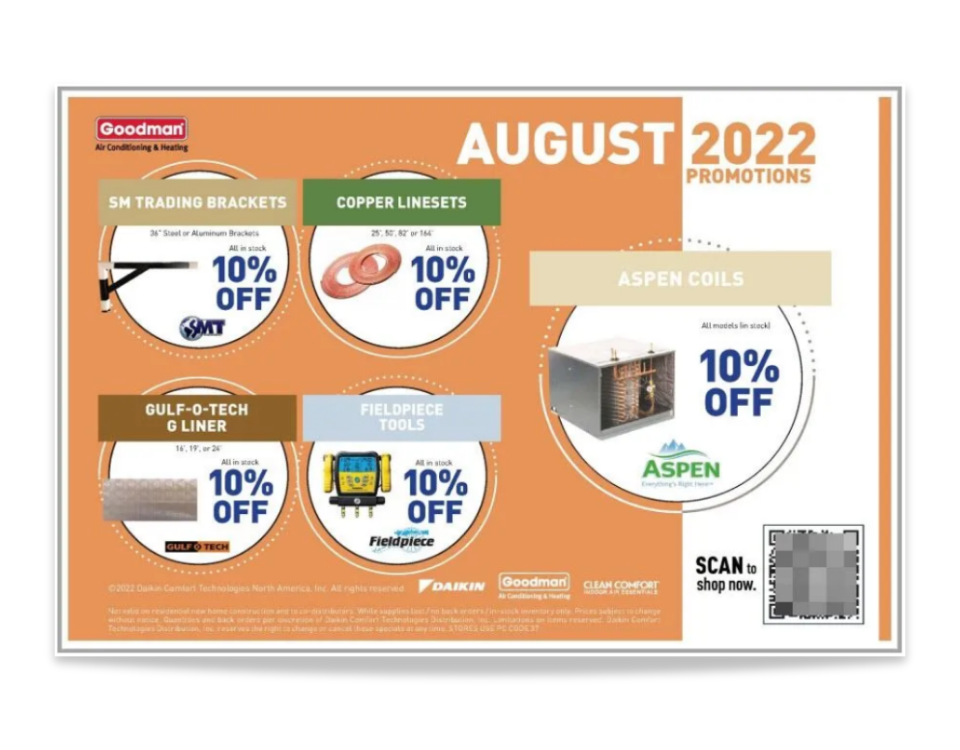
This automation helped them save a lot of time. In their words,
“We’ve definitely become more efficient. Step one was knowing the database was correct, making sure we’re getting this direct mail out to people. Step two for us will be that full analytical dive, to see what people are doing with that information.”
Ready to Implement Postalytics Automation?
Want to unlock the power of automation and the different features you can use in Postalytics?
Start your free trial and get acquainted with the different tools. You can also get in touch with our team to learn more about Postalytics.
About the Author

Dennis Kelly
Dennis Kelly is CEO and co-founder of Postalytics. Dennis joined Boingnet, the predecessor to Postalytics, in 2013. Boingnet was focused on providing print and direct mail marketing service providers the ability to add digital marketing channels to their direct mail campaigns. Postalytics is Dennis’ 6th startup. He has been involved in starting and growing early-stage technology ventures for over 30 years and has held senior management roles at a diverse set of large technology firms including Computer Associates, Palm Inc. and Achieve Healthcare Information Systems.
